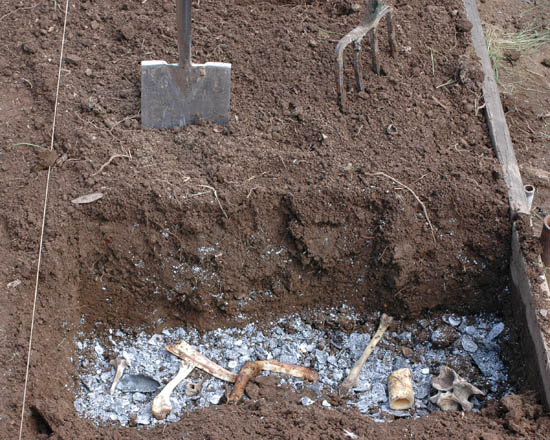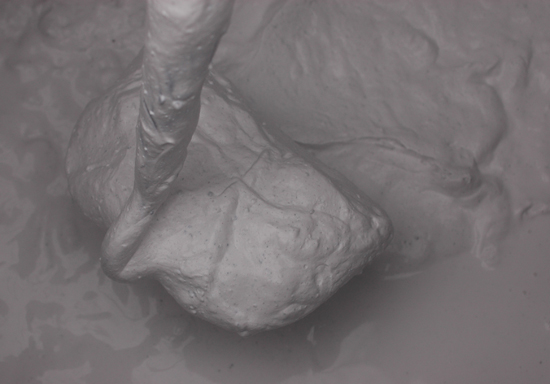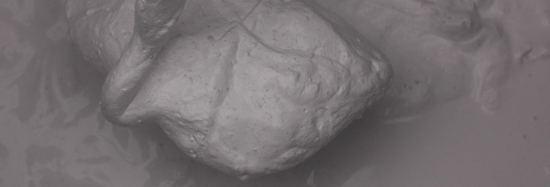By Steven Edholm
I used to be so confused about lime. Some limes have more than one name and more than one use which can be difficult to keep sorted out in your head when you have no frame of reference. Lime is super neat though, and worth understanding. I’ll attempt here to present the types of lime and their uses in a way that is accessible to people without that frame of reference... or maybe offer an accessible frame of reference for understanding lime. For more on lime burning and the lime cycle see The lime squad I and Lime Squad II posts on the Turkeysong blog.
First off, lime is cool, and so useful! Understanding what uses there are for lime can help us understand the three basic forms of lime that we might have access to or make. The basic use groups are these.
Reactive uses: use the caustic nature of limes to chemically attack plant and animal substances in food processing and tanning of skins. In other reactive uses, lime reacts chemically with other elements as in dyeing or to potentiate the drug alkaloids found in Coca leaves and Betel nut.
Plastic uses: These are used for building, painting and in the arts. the lime is shaped it how we want it before it dries and hardens.
Agricultural uses: Used to adjust soil acidity into a range suitable for most plant growth, as well as to provide calcium.
Nutritional uses: as a calcium supplement.
Filler uses: Powder used as a filler in the arts for painting and sizing.
Fluxing: Used to lower the melting temperature of unwanted materials during smelting of metals.
Thats enough basic uses for us to tackle in this short article about understanding the different forms of lime. In future articles, I may address each use group more specifically to cement that understanding.
All lime comes from biological processes! Wow! that’s amazing. All those billions of tons of limestone, chalk, marble, shells, coral and all that stuff was collected from the environment by living organisms. When the organisms died they left deposits of their calcium rich shells which have changed form over time. That's humbling.
Lime can exist in three basic forms in a simple “cycle”. The lime can change from one form to the next in this cycle, and back again. The basic material is calcium with variations in what is and isn’t attached to it. We start the cycle at limestone.
Limestone: Limestone, shells, marble, chalk etc.... there are various forms of limestone, but they are all basically the same material. One type contains a lot of Magnesium in a similar form and we call that Dolomite lime. Dolomite's uses are similar to regular limestone. The limestone form, including shells of all kinds, is Calcium Carbonate. It is calcium with 3 carbon atoms attached to it. You know, carbon as in carbon dioxide the famous greenhouse gas. We are all familiar enough to know what stone and shell are like. They are hard and tough. Maybe more important to understand is that they are not really reactive. We can throw rocks and shells in water and they just sit there. The take home message is that they are stable so they resist the elements. Calcium Carbonate is the most natural and common form of lime and the one that other forms of lime will naturally turn into if exposed to the environment.
Quicklime: If we take our Limestone rocks or shells and heat them up to a red heat, we drive off the carbon completely replacing those three carbon atoms with one oxygen atom to make CaO (calcium oxide) one calcium to one Oxygen. If you're starting to get nervous about all that chemistry crap, never mind the chemistry. The important thing to know is that the burned lime is highly unstable and very quick indeed to react to moisture. Unless stored in a completely sealed container, it will quickly begin to react with the elements of the environment and start the process of turning back into limestone. Quicklime is so unstable (and unsafe to have around) that it should be slaked processed into the next form) as soon as possible, preferably right after burning. Quicklime is very light in weight without those carbon molecules which are now floating around in the environment somewhere as greenhouse gasses. It is also thirsty for water which it can pick up from even the little bit in the atmosphere. If left out, quicklime will usually absorb moisture from the air, often falling into a pile of fine powder which brings us to our next stage of the cycle...
Hydrated lime and lime putty: When water is added to the thirsty quicklime, it absorbs H2O molecules rapidly forming Calcium Hydroxide. One Calcium, two Oxygen and two Hydrogen. In this process heat is given off and the mixture can even boil violently. There are a couple forms of calcium hydroxide. If the calcium hydroxide is made in the form of a putty with excess water and stored in this wet state, it is known as lime putty. Lime putty is the most reactive form of calcium hydroxide, and the most stable way to store it. Lime putty is completely safe from conversion into limestone, as long as it is kept wet with no exposure to the air. More commonly, Calcium hydroxide is found in the form of a fine powder known as builders lime, type S or hydrated lime. This powder of lime is often used in tanning and building because it is convenient to store and sell in the dry form, but it is less stable because a portion of it will turn back into the limestone form with exposure to air, which also makes it less reactive. Don’t worry if you are getting confused already, we are going to drive home this information with practical examples and if you ever use lime, you will begin to form a context for understanding and remembering the different forms.
So there are the three forms of lime, but to close the cycle the last form, calcium hydroxide or hydrated lime, has to turn back into limestone. This process is simple and we hinted at it already. When the lime putty is dried it absorbs carbon from the air turning back into limestone. In the case of hydrated, or powdered lime, the powdered lime is wetted first and then absorbs carbon as it dries, though it doesn’t carbonate as thoroughly as lime putty. You might be getting the idea that I’m partial to the lime putty form rather than the powdered form, and you’re right, but the powdered form is useful too and often what is available. More on that later...
BURN *So, we have gone from limestone rocks or shells which we heated up to drive off carbon causing the atmosphere to warm up, killing the planet.
SLAKE *Then we added water to the resulting thirsty quicklime which boiled violently or fell into a fine powder depending on how much water was added.
CURE *Then we let the spreadable, wet lime putty, or hydrated lime paste , dry slowly. As the lime dries is reabsorbs carbon from the air saving the planet form carbon dioxide poisoning and forming limestone again.
We can use lime at these various stages for different purposes. There are so many different uses for lime, that we’ll defer most of that discussion for another time, but here are the characteristics of each type of lime discussed in the context of some common uses.
Limestone, Shells, Etc: (Calcium Carbonate). Having been stabilized by the absorption of Carbon dioxide, Limestone, shell, marble etc.. are basically stone as we commonly think of it. The stone can be used for building and paving of course. Limestone and shell can also be used in agriculture in a powdered form, and while other forms of lime can be applied to the soil as well, it is usually the carbonate form that is used. Lime increases the ph of soils by buffering soil acidity. Calcium Carbonate is fairly stable and non-reactive, but acids, like Carbonic acid naturally found in the ground, slowly dissolve the lime in the soil which is washed out by rains. Lime, usually as ground shell, can also be used as a nutritional supplement and in animal feeds, particularly to provide a source of calcium for chickens ensuring strong eggshells.
Quicklime: Quicklime is dangerous to handle and store because it is highly reactive. It heats rapidly and undergoes a violent reaction when water is applied. This process is called slaking. If the water is applied slowly and in measured quantity, the quicklime will fall into a very fine powder of hydrated lime. If it is slaked with more water, the water may boil and spit hot lime putty and caustic alkaline solution all over the place. It also expands a great deal during slaking, which is sometimes taken advantage of in building. By using the still expanding quicklime to mortar walls, the lime, sand mixture is forced into all crevices in the stone. Quicklimes uses in the arts are actually minimal. The most common use of quicklime is probably as a flux in smelting metals, though it is often added in the calcuim carbonate form as shells in primitive smelting, which then cook into quicklime in the smelter.
Hydrated lime and lime putty (Calcium Hydroxide): This is the form of lime with the most uses in arts, trades and cooking. It is chemically reactive, alkaline and caustic. Being highly alkaline, it modifies or attacks other materials like some proteins and cellulose, making it very useful. it also reacts with fats to form soluble soaps. When it dries it turns back into limestone as we said, which is non-reactive except with acids. Calcium hydroxide can be used to prepare skins for tanning by attacking certain proteins to release the hair from the skin, and dissolving various substances in the skin fiber which can then be removed by washing. It can also be used to process corn to make it more digestible in a process called nixtamalization (for more on which see this excellent page on corn processing and tortillas). There are many many uses for Calcium Hydroxide.
- Type S or Hydrated Lime (aka, builders lime): is a fine powder form of calcium hydroxide. Hydrated lime is convenient to store and ship, but is not as reactive as lime putty and makes a relatively poor material for building purposes (even though it is often called builder’s lime which says more about our building ethic than anything else). It’s convenient form however makes it the most common form of Calcium Hydroxide and it is perfectly fine for some uses like preparing skins and nixtimalizing corn.
- Lime Putty: Lime putty will keep indefinitely if stored with a thin layer of water over it and can even improve over time. Some lime putty is stored for years to make fine quality limes for exacting uses such as fresco paintings. It is the most caustic form of Calcium Hydroxide and should be the first choice for building purposes and arts unless a powder is required. When used for its reactive properties, less is needed than when using hydrated lime. When used in building, it has better workability, carbonates more thoroughly and consolidates into an all around more durable material upon curing. Adding water to hydrated lime does not make lime putty, it has to be made during slaking by the addition of a larger amount of water.
RECAP:
*Lime is neat and useful!
*There are three basic forms of lime with different properties and two basic forms of the most used form, which is Calcium Hydroxide.
*Calcium hydroxide in the form of either powder or putty is caustic and reactive with many substances making it very useful.













